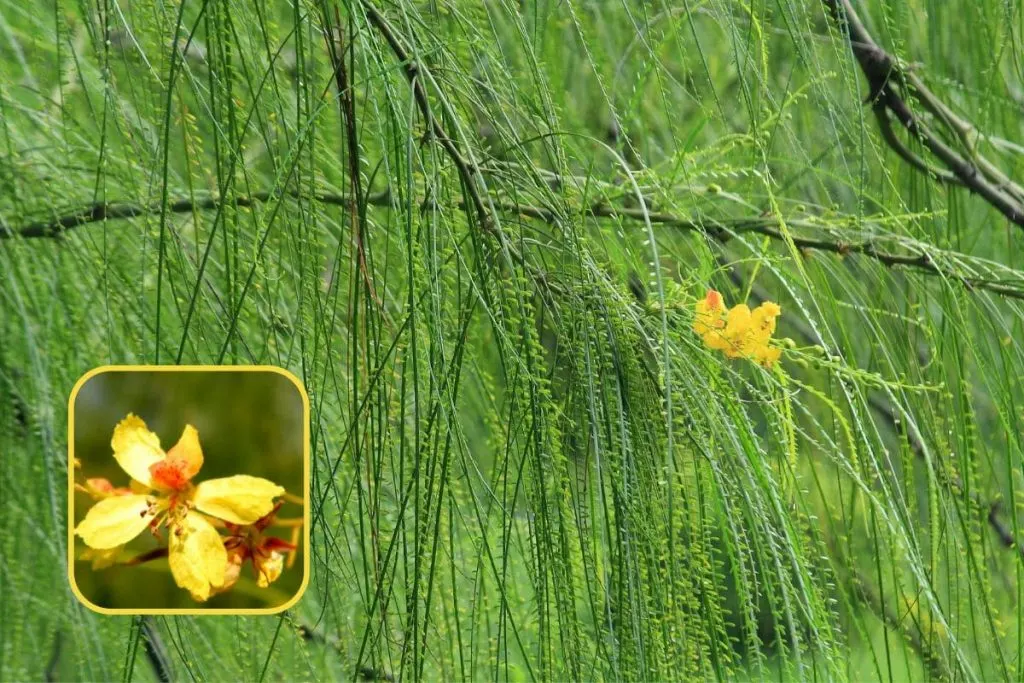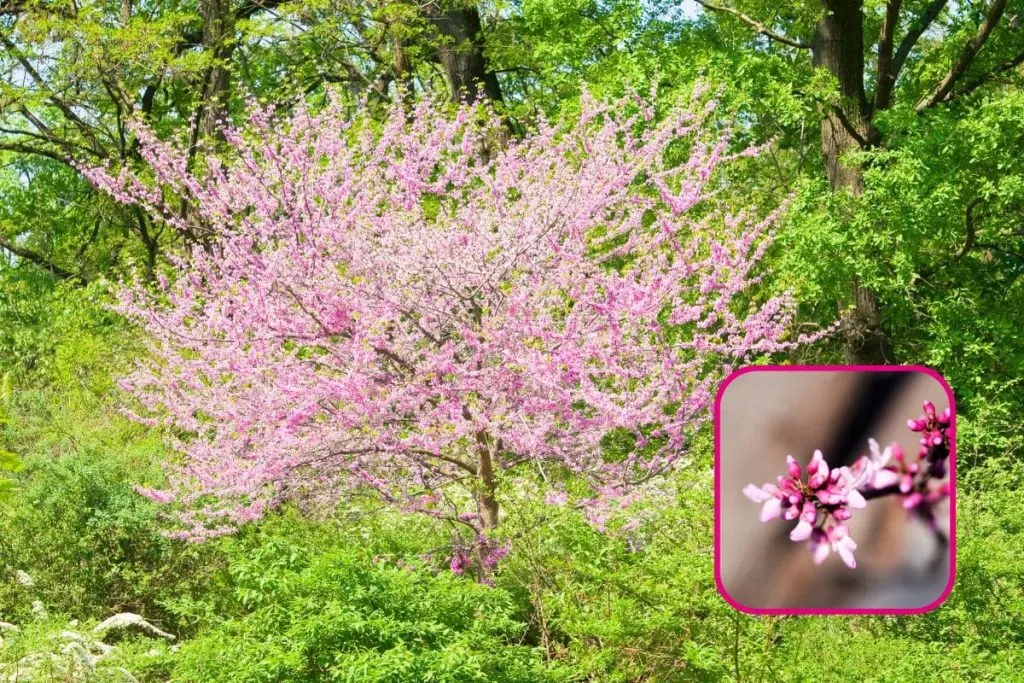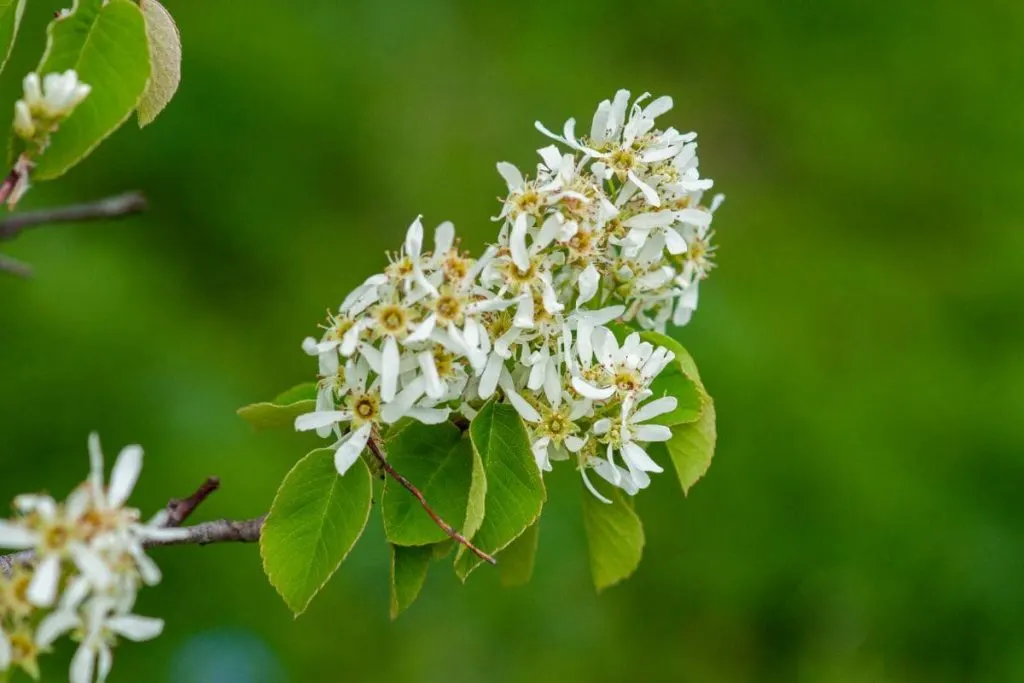In today’s article, we will talk about 11 flowering trees in Texas. If you live in Texas and soon you are missing trees and plants in your yard or garden, today’s article will help you in that decision.
I believe that all of us who love flowers, plants, and trees at one point are simply not sure what to do with an empty place in our garden. When you love plants, you will not leave an empty place, but you will get something that will decorate your space in that garden.
I hope you are ready to learn all about the beautiful flowering trees in Texas. We have prepared 11 different species that vary in color, size, and appearance of flowers and leaves, and you will surely fall in love with at least one of them.
So let’s learn more about them, so that already tomorrow, you can go and plant one.
Learn About Care Guide For Flowering Trees In Texas

If you want to brighten up your yard and garden with spring colors, vines, or smaller trees, then this article is perfect for you. If you haven’t decided what to offer and plant in your garden this spring, then today is the right time to do it.
Your garden will be enriched with several colors, and you will enjoy beautiful colors throughout your space.
Let’s learn care guides for 11 beautiful flowering trees in Texas.
1. Desert Willow And Its Purple Flowers

Chilopsis linearis known as a desert willow is an amazing evergreen tree with pale pink flowers. This low-branching flowering tree is very similar to a palm in its leaves since they have the same shape. It looks like a palm tree got flowers! It can grow up to 25 feet.
LIGHT CONDITIONS
If you want to see this lovely tree thriving in your garden, expose it to direct sun for at least 6 to 7 hours per day. They can grow in bright indirect light too, but as long as they have their minimum of sun per day.
WATERING NEEDS
Water your tree in its growing season at least 2 per week since it’ll need much water to grow in the first month or two.
Since they don’t grow in pots, water will arrange under the soil all around the roots and you won’t have standing water issues like you do when you plant trees in a pot first. Tap and rainwater and more than fine.
SOIL TYPE
Plant the desert willow in acidic, alkaline, loamy, and sandy soil conditions. These soil types are the perfect kinds for this tree. Sometimes people will just plant it in any soil type because they don’t want extra work, but in that case, you’ll have to try hard with water and light conditions.
FERTILIZER
Desert willow trees don’t have to be fertilized.
PRUNING
Prune them in early spring or late winter for better growing conditions or if you want to simply trim them for a nicer look.
PROPAGATION
Desert willow trees can be propagated from seed, hardwood cuttings, or softwood cutting. Place the seed or the cuttings in new fresh soil, at that point it can be fertilized and that is it. Expect new branches and a new tree soon.
2. Magnolia Tree, Another Amazing Flowering Tree Of Texas

M. grandiflora also known as the magnolia tree is an amazing deciduous tree that blooms in many states (magnolia tree Florida). It is also one of the most wonderful flowering trees in Georgia and the flowering trees of North Carolina. Some specimens can grow up to 70 feet.
LIGHT CONDITIONS
Expose your magnolia tree to direct sun for 6 hours per day. It can grow in a shady place that also has sun in the morning or afternoon. Afternoon shade might be a better option for it. Constant shade can kill its blooms and it won’t get such a pink color.
WATERING NEEDS
Rainwater suits it the best for some reason. It doesn’t like distilled water, tap water is also fine. Water it once or twice in 10 days. The same watering rules go for Blanchard southern magnolia.
SOIL TYPE
Slightly acid soils but neutral are the best choices of soil for magnolia trees. They don’t like sandy loamy soils like some flowering trees. They don’t like black soil either.
FERTILIZER
Just like desert willow, magnolia doesn’t have to be fertilized, but if you want to increase its chances of blooming in the blooming season, use 12-4-8 or 20-5-10 fertilizers.
PRUNING
It can be pruned before its blooming season to increase its chances of healthier and wider flowers. Use sharp scissors or a knife when pruning.
PROPAGATION
Magnolia trees can be propagated by seeds and stem cuttings. Most people prefer stem cutting because it’s much faster and easier for trees to grow. When propagation, use the same soil you used for the first time planting. Also, apply 20-5-10 fertilizer in its fresh soil.
3. Jerusalem Thorn And Its Lovely Lime Green Branches

Parkinsonia aculeata is another amazing example of flowering trees yellow you’ll completely adore and love. Along with Crape myrtle and the fast-growing willow tree, it is considered one of the most beautiful trees in Texas. Its yellow flowers and lime green branches aren’t easy to resist.
LIGHT CONDITIONS
Jerusalem thorn enjoys partial shade with direct sun for at least 4 hours. Its yellow blooms simply need the sun to bloom healthily.
If you want to see healthy blooms in late spring and early summer, place it somewhere where there is afternoon shade and lots of sun in the morning hours.
WATERING NEEDS
They don’t like it and need a lot of water. You can water it once in 15 days and they’ll be fine. During rainy weather they look sort of droopy, you’ll notice I’m sure. Sunny weather suits them perfectly.
SOIL TYPE
They prefer alkaline soil and a bit wet, not soggy. As we said above, water isn’t their need number one. Sandy soils won’t suit them either.
FERTILIZER
Balanced fertilizer is just fine for this flowering tree. Sometimes, you’ll notice that by their shape and blooms, you won’t have to fertilize them at all.
PRUNING
Unless you want to fix their shape, these trees don’t have to be pruned. If you do some pruning, however, do it in the late wintertime, just as you would do with desert willow trees.
PROPAGATION
The easiest way to propagate this tree is with stem cutting. Place the fresh cut stem cutting in fresh soil, that can be wetter than usual, and voila, all done!
4. Texas Redbud With Its Pink Flowering Trees

Cercis canadensis var. texensis is a perfect green tree in the first part of spring and when it blooms, it gives the most perfect violet to dark pink flowers you’ll completely love and enjoy. You’ll notice these trees a lot in Central Texas. Who doesn’t like dark purple trees right?
LIGHT CONDITIONS
When it comes to its light conditions, they thrive well in partial shade and bright indirect light. They don’t prefer more than 3 hours of direct sunlight. Its flowers are very sensitive.
WATERING NEEDS
This tree, due to its Texas native habitat is one of the drought-tolerant trees. Rainwater is a good choice for this plant along with tap water.
SOIL TYPE
They don’t like soggy, loamy, or sandy soils, they prefer acidic, alkaline, and clay soils. This amazing drought-tolerant tree is an amazing perennial tree that will just keep growing once it’s placed in the right soil type.
FERTILIZER
Use only organic neutral fertilizers for this tree.
PRUNING
Trees can and should be pruned in the late winter time due to their flowering season that being with early springtime. You can also trim it to reduce size.
PROPAGATION
Like most trees, this tree can also grow from seedlings and stem cuttings.
5. American Smoke Tree: Amazing Deciduous Tree

Cotinus obovatus is an amazingly small, round, deciduous tree native to the USA. In the first months of springtime, it’s green and pale red, then as the blooming period begins, it’s redder and bigger. Its flower buds as well are simply breathtaking. It can grow up to 30 feet.
LIGHT CONDITIONS
This lovely tree is in bright indirect light conditions combined with at least 7 hours of direct morning or afternoon sun, depending on where you plant them.
WATERING NEEDS
Water it 2 times in 10 or 12 days with rainwater, tap water, or even distilled water fine. They hate too much water, so if they get droopy during high temperatures, do not overwater it!
SOIL TYPE
Choose high pH, alkaline soil types for this tree and you won’t do anything wrong. Any other type of soil just won’t suit it much.
FERTILIZER
To be fertilized, just apply a nice compost fertilizer to your tree soil. Do this in early springtime.
PRUNING
Trees don’t have to be pruned to make sure they’ll grow better, you can simply prune them when you want to reduce their size.
PROPAGATION
Propagate your lovely American smoke tree with stem cutting by using a sharp knife to cut it. Dunt knives can do much damage to your stem cuttings.
6. Texas Smoke Tree – Cotinus Obovatus For Your Garden

Cotinus obovatus is an amazing small tree that you’ll love seeing in your garden! It is similar to the swamp willow tree and they produce flowers with lovely super pale pink color that almost looks white. It is very similar to the spring snow crabapple tree.
LIGHT CONDITIONS
They prefer full sun for at least 6 to 7 hours, even 8 hours won’t do any damage. If you do notice yellowing leaves, just make sure you cut off the edges right away.
WATERING NEEDS
You can water texas’s smoke tree once in 20 days, it won’t die, it is drought tolerant tree. They don’t have any specific wishes for the type of water, they like most kinds of water.
SOIL TYPE
Alkaline soil works the best for this type of tree. You can also choose soil that absorbs moisture better than the regular types of soil since you’ll be watering it less than other trees.
FERTILIZER
The tree doesn’t have to be fertilized.
PRUNING
Prune the texas smoke tree in early springtime with a sharp knife and always wear gloves!
PROPAGATION
Taking cuttings or propagating your trees from seeds are two easy ways to propagate your texas smoke tree.
7. Mexican Plum Trees For Your Yard

Prunus Mexicana is an amazing evergreen tree native to Mexico and it is an amazing tree with purple flowers. Of course, as with any other plum tree, it blooms in spring but these amazing fruit trees won’t give you only nice blooms in the springtime, but you’ll get delicious plums as well.
LIGHT CONDITIONS
Full sun with partial shade conditions will suit the best Mexican plum trees. This works best for most fruit trees. Once they got fruits, they don’t like the full sun so much.
WATERING NEEDS
Water them with tap water in the morning hours. Too much water can kill its sensitive roots when you plant it in the first 3 to 4 weeks. Be careful with the watering schedule. Two times per week is enough.
SOIL TYPE
Loamy, moist, sandy, and silty loam soils are soil types that work well for this tree. If it’s not noted or mentioned, it is not the best choice to use that type of soil.
FERTILIZER
The tree doesn’t have to be fertilized.
PRUNING
Prune your Mexican plum tree a month before flowering buds appear. You can also do one pruning before in the late winter time.
PROPAGATION
Mexican plum is propagated with stem cuttings more usual than from seeds. If you want a faster way of propagation, use fresh loamy well-draining soil and stem cuttings.
8. Flowering Dogwood And Their White And Pink Blossoms

Cornus Florida is an amazing tree that grows in seven distinct regions with amazing heart-shaped leaves and lovely white flowers. It is one of the Florida oak trees that you’ll see anywhere in Florida but lately in Texas as well.
LIGHT CONDITIONS
This beautiful tree wants afternoon shade and morning sunlight. That means they have at least 5 hours of full direct sun and partial shade in the afternoon hours.
WATERING NEEDS
Well-drained soils are more than perfect watering needs for this tree. Water them 2 times per week, or 3 times in 15 days, they can tolerate it and it won’t disturb their roots.
SOIL TYPE
As we mentioned above, well-drained soils work the best along with clay, loamy and acidic soils. pH should be either 4 or 5.
FERTILIZER
Fertilize flowering dogwood with 12-4-8 or 16-4-8 fertilizers. Other fertilizers just won’t suit them well, so don’t try them.
PRUNING
Prune it to reduce the size and as mentioned many times above, in their flowering season which is in April and May. Sometimes, if it doesn’t have needed conditions, they’ll bloom in early June in not such great shape.
PROPAGATION
These lovely pink blossoms can be propagated with stem cuttings. It’s best to propagate them in late fall time or in January.
9. Understory Tree – Oklahoma Red Bud Tree

Cercis reniformis ‘Oklahoma‘ is an amazing purple tree very similar to the dwarf jacaranda tree. You’ll fall in love with its purple blooms and I don’t have to tell you how much it will look great in your yard.
They are simply amazing. Along with the royal empress tree and its deciduous green foliage, it will be one of the best trees in your garden.
LIGHT CONDITIONS
Expose it to the direct sun for at least 5 hours per day. It likes the morning sunlight the most, so make sure your blooming tree gets its light.
WATERING NEEDS
By using tap water and rainwater in the morning hours or late evenings, you’ll increase your chances for better healthier growth.
SOIL TYPE
Clay soils are the best choice for Oklahoma redbud trees and most crabapple trees. This tree doesn’t like soggy soils much.
FERTILIZER
The Oklahoma redbud doesn’t have to be fertilized at all. Some people still avoid the care guide and fertilize them on their own, in that case, use compost only.
PRUNING
It is similar to lavender branches that need to be pruned in April and may before they start blooming with sharp scissors or a shape knife.
PROPAGATION
The tree is propagated with stem cuttings with the same method as magnolia family trees and crabapple trees.
10. Amelanchier Arborea Will Make Your Garden Sparkle With Its Pale Pink Flowers

Amelanchier Arborea trees are native to northern Mexico and northern America. You’ll most probably see these lovely trees on a long walk through the forest in North America.
Its lovely tiny white flowers are a real treat for the eyes. Sometimes they look like greenish-yellow flowers in late autumn time. Whether they have pink blooms or white flowers, you’ll enjoy Texas trees anyway.
LIGHT CONDITIONS
Its dark green foliage and white flowers need full sun for 7 to 8 hours per day, but it is most likely you’ll see them in shade areas in forests or even on Texas streets.
WATERING NEEDS
They are super drought-tolerant trees so you don’t have to stress if you skip a time or two to water them, they’ll be good on their own since they have storage of water in their roots anyways.
SOIL TYPE
Clay and loamy soils are the best choices for this evergreen tree. Don’t use soggy soils for this tree since they will hate it. They just don’t tend to grow in such soils.
FERTILIZER
The tree can grow in the forest on its own so due to that, it doesn’t have to be fertilized.
PRUNING
These trees don’t have to be pruned as well. But if you’re growing them at home, in front of your porch, for example, it’s always recommendable to reduce their size a bit in their active growing season.
PROPAGATION
Take the stem cuttings from healthy branches and place them in fresh well-drained soil. You can expect new leaves in about 2 weeks.
11. Chaste Tree Grows In Any Texas Garden

Vitex agnus-castus along with texas mountain laurel with its dark green and violet blooms presents one of the best texas trees. Another amazing tree that you’ll love is a grape kool-aid tree, very similar to the chaste tree and anacacho orchid tree. Don’t forget about texas wild olive either.
LIGHT CONDITIONS
Plant your chaste tree in a location that receives plenty of afternoon sun and evening and morning shade. This tree does not like full shade conditions at all.
WATERING NEEDS
When it comes to watering this tree, use tap water and let the rainwater do its job when the weather is rainy. This tree appreciates good drainage.
SOIL TYPE
It suits almost any type of soil, except sandy soil, but the soil must be well-drained and not acidic. This tree does not like acidic soil at all!
FERTILIZER
Chaste trees don’t have to be fertilized.
PRUNING
Prune this tree in February or March, just before they bloom, to improve the quality of the new blooms.
PROPAGATION
Chaste trees are propagated from seedlings and stem cuttings, although when it comes to trees, it is always easier and faster to propagate from stem cuttings due to efficiency.
FAQ – Flowering Trees In Texas

As always, we will do our best to answer all your questions in the faq section, and this time we will also answer everything you are interested in regarding the flowering trees of Texas. Let’s find out a little more about these wonderful branching trees.
What Are the Most Beautiful White Flowering Trees In Texas?
As much as we love the colors in the spring in our garden, some people still opt for elegant white tones because they simply fit into the look of their house and look better to them personally. In that case, for all lovers of white flowers on trees, choose:
- Chinese fringe tree,
- Magnolia,
- Oleander,
- Crape Myrtle and many more.
What Texas Tree Blooms In March?
Wrapping It Up About Flowering Trees In Texas

In today’s article, you learned everything you need to know about flowering trees in Texas. You learned their precise care guide, and everything about their appearance, and after the description and photos, I’m sure you already know which tree to choose for your garden.
These beautiful trees deserve a place in your yard, lots of love and attention, and in return, they will give you a beautiful landscape when you look out the window, and they will be a real treat for the eyes and passers-by.
You can always opt for the other mentioned trees that do not belong to your region, but who knows? With love, any plant can grow anywhere, right?
See you soon with more similar topics!

